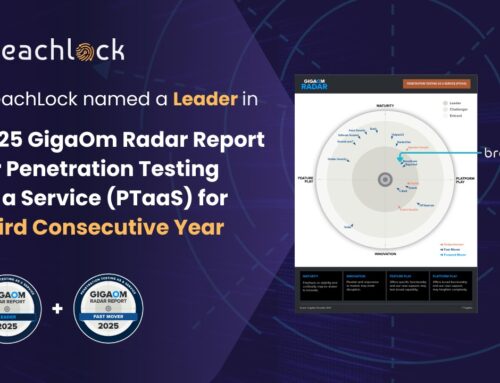
Cisco ASA/FTD 0-Day Vulnerability Exploited for Authentication Bypass – PoC Released
Urgent Cybersecurity Alert: Cisco ASA/FTD 0-Day Vulnerability Under Active Exploitation
The cybersecurity landscape has been rocked by critical news: a zero-day exploit chain targeting Cisco Secure Firewall Adaptive Security Appliance (ASA) and Secure Firewall Threat Defense (FTD) software is currently under active exploitation. This isn’t theoretical; it’s a real-world threat being leveraged by an unknown advanced threat actor in highly targeted attacks. For organizations relying on Cisco ASA and FTD as their perimeter defense, immediate attention and action are paramount. This isn’t just another vulnerability; it represents a direct pathway for unauthenticated remote code execution and authentication bypass, making it an existential threat to network integrity.
Understanding the Cisco ASA/FTD Exploit Chain
This dangerous exploit chain, as reported by Cisco and Rapid7, is a sophisticated combination of two distinct vulnerabilities. Together, they create a potent weapon capable of bypassing authentication mechanisms and achieving remote code execution without requiring prior access credentials.
- CVE-2025-20362: While specific details about this vulnerability are still under wraps, its inclusion in the chain points to a critical flaw that, when combined with the second CVE, enables the attacker to gain a significant foothold.
- CVE-2025-20333: Similarly, the precise nature of this vulnerability is not fully disclosed, but its role in facilitating unauthenticated remote code execution highlights a severe weakness in the Cisco ASA/FTD architecture.
The combination of these two zero-day flaws allows an attacker to effectively circumvent the robust security controls typically found in Cisco’s firewall solutions, posing a direct threat to the confidentiality, integrity, and availability of protected networks.
Impact of Authentication Bypass and Remote Code Execution
The implications of this Cisco ASA/FTD zero-day vulnerability are severe. An unauthenticated attacker gaining remote code execution on a firewall or security appliance can:
- Gain Full Network Control: Compromise the device itself, leading to complete control over network traffic filtering, routing, and access.
- Establish Persistence: Install backdoors or other malicious software to maintain access even after initial exploitation.
- Exfiltrate Sensitive Data: Access and steal sensitive data traversing the network.
- Launch Further Attacks: Utilize the compromised device as a springboard for lateral movement within the network, targeting other critical systems.
- Disrupt Operations: Introduce denial-of-service conditions or manipulate network configurations to cause outages.
Given the targeted nature of the ongoing attacks, it is highly probable that the threat actors are well-resourced and have a specific objective, making the immediate remediation efforts even more critical.
Remediation Actions and Mitigation Strategies
While official patches for these specific zero-day vulnerabilities are not yet publicly available, Cisco has issued advisories, and organizations must take proactive measures to protect their assets. This includes a multi-pronged approach encompassing monitoring, temporary mitigations, and preparedness for future patches.
- Monitor Cisco Advisories: Regularly check the official Cisco Security Advisories page for updates on CVE-2025-20362 and CVE-2025-20333. Subscribe to their security notifications.
- Review Access Controls: Scrutinize all remote access policies to Cisco ASA/FTD devices. Ensure that only absolutely necessary access is permitted and that it adheres to the principle of least privilege.
- Implement Strong Authentication: Where remote access is essential, enforce multi-factor authentication (MFA) to add an extra layer of security, even if the primary authentication mechanism is bypassed.
- Network Segmentation: Ensure critical network segments are isolated, limiting the potential blast radius of a compromised firewall.
- Advanced Threat Detection: Deploy and maintain advanced intrusion detection/prevention systems (IDS/IPS) upstream and downstream of ASA/FTD devices to detect anomalous traffic patterns or exploit attempts.
- Frequent Backups: Regularly back up configurations and critical data for your ASA/FTD devices and other network infrastructure components.
- Incident Response Plan: Review and update your incident response plan to specifically address potential compromises of perimeter security devices.
Tools for Detection and Mitigation
In the absence of a direct patch, leveraging existing security tools becomes crucial for identifying potential exploitation attempts and bolstering defenses.
| Tool Name | Purpose | Link |
|---|---|---|
| Snort | Network Intrusion Detection System (NIDS) for real-time traffic analysis and packet logging. Can be configured with custom rules for potential exploit signatures. | https://www.snort.org/ |
| Suricata | Open-source Network Intrusion Detection/Prevention System (NIDS/NIPS) and Security Information and Event Management (SIEM) engine. Offers multi-threading for high performance. | https://suricata-ids.org/ |
| SIEM Solutions (e.g., Splunk, ELK Stack, Microsoft Sentinel) | Centralized log management and security information and event management. Essential for correlating logs from ASA/FTD devices and other sources to detect suspicious activity. | Varies by vendor |
| Nessus (or other Vulnerability Scanners) | While not directly detecting a 0-day, these tools can identify other configuration weaknesses that might be leveraged as part of a broader attack chain. | https://www.tenable.com/products/nessus/ |
Staying Ahead of the Threat
The active exploitation of this Cisco ASA/FTD zero-day vulnerability underscores the constant pressure security teams face. Rapid response, continuous monitoring, and proactive security measures are non-negotiable. As more information and official patches become available, swift implementation will be critical to safeguarding network infrastructures against these sophisticated attacks. Organizations must prioritize immediate review of their Cisco ASA and FTD deployments and prepare to apply any forthcoming security updates without delay.





